Level By Level
‘Super Mario 64’ Level by Level: Course 1 – Bob-Omb Battlefield
Editor’s note: Join us over the next two weeks as we look back at the most outstanding and influential games of 1996.
Over twenty years later, Super Mario 64 remains a top-notch example of bravely innovative and masterfully fluid game design not only for its groundbreaking three-dimensional gameplay that was a tipping point for the entire industry but also for the design of its intricately crafted and sweepingly diverse fifteen courses. In this continuing feature, I will examine each of these fifteen courses in detail, attempting to pick apart each course and evaluate its accomplishments and inadequacies. With the upcoming Super Mario Odyssey being only the third Mario game in the same vein as Super Mario 64 (following Super Mario 64 and Super Mario Sunshine), it is high time to reexamine one of the evergreen staples of the video game canon. In this installment, I’ll be taking a look at Course 1 – Bob-Omb Battlefield.
As the only course with a zero-star requirement to enter, Bob-Omb Battlefield is the mandatory first level of Super Mario 64, minus the castle hubworld. While the hubworld allows the player to explore Mario’s moveset at their own pace, Bob-Omb Battlefield is the first time the game mandates a goal and emphasizes direction.As the first course in the game, it serves as an introduction to of the game’s core mechanics and overarching design philosophy. Of all fifteen courses in the game, Bob-Omb Battlefield seems the most explicitly concerned with translating the Mario universe from two to three dimensions, and it’s Mario-ness effuses from the aesthetic, level layout, and enemy selection.
The basic design of Bob-omb Battlefield, pictured in an inaccurate but cute and conceptually adequate figure above, is comprised of a few flat plateaus of slightly different altitudes, a small canyon that cuts between them, and a mountain with an upward spiraling trail. By starting the player off at the level’s low point, the vast majority of the level is concealed from view, meaning that all upward movement not only leads closer to the goal but also to uncovering what lies ahead, serving as a visual barrier much like the right side of the screen in 2D Marios. In moving from the lowest plateau to the second highest to the third highest and then eventually up the mountain, numerous core concepts of the game are introduced and tested with slightly ascending difficulty as the player reaches the level’s apex.
Take walking in a straight line, for instance. This basic skill is tested by three bridges strategically strewn about the level in order of increasing difficulty. While the first bridge near the very start of the level tests whether the player can walk across a fairly wide platform, the see-saw bridge around the next bend tests whether the player can walk across a slightly narrower bridge quickly enough to not tilt off. Finally, a bridge near the top of the mountain tests whether the player can walk across an especially narrow bridge, where falling could mean health loss and a bit of backtracking. This careful increase in difficulty is not only represented through the level’s bridges, but in nearly every aspect of its design, in order to ensure that by the time the player reaches the top of the level to clash with Big Bob-Omb, they will be familiar with basic movement in three-dimensional space, taught through nuanced level design.
Combat scenarios similarly increase in difficulty as the player runs into quintessential Mushroom Kingdom enemies that increase in difficulty and number (from one goomba, a la Super Mario Bros., to either a couple of goombas or a bob-omb, to a chain chomp, to several rolling balls the player must evade to reach the mountaintop. Although the player does not necessarily have to jump or attack in order to reach the top, the rolling balls are much easier to evade by jumping and the bob-ombs easiest to kill by throwing. By introducing familiar enemies and hazards in the first level, Bob-Omb Battlefield operates within the vocabulary of past Mario games, thereby encouraging subtly communicating combat techniques (such as jumping on a goomba or throwing a bob-omb) to Mario veterans. By the time the player reaches the top of the mountain, they will likely be proficient enough in the mechanics required to beat Big Bob-Omb (movement and throwing) because the game has required or insisted upon learning those mechanics through traversing the level. In beating Big Bob-Omb, the player’s basic familiarity with movement and combat is certified.
Each of the core fifteen levels in Super Mario 64 contains six stars with an expressed objective and an additional seventh star for collecting 100 coins in that level. In an interview about Super Mario 3D World, its director, Koichi Hayashida, revealed that although flagpoles were originally planned for Super Mario 64, “…when they thought about what was the most fun about playing in 3D, it was going to all sorts of places and looking for something, so they decided on players getting a Star.” This decision to have varying endpoints radically opens up level traversal and exploration, as the player is encouraged to explore every crevice of the map instead throughout each level’s seven star journey.
In Bob-Omb Battlefield, the first star is earned by besting boss Big Bob-Omb, as described above. While that star ensures the player has a basic familiarity with the level and enough skill controlling Mario to climb the mountain and beat the boss, Star 2 pits Mario in a “Footrace with Koopa the Quick.” This star underscores the intent of the first star by forcing the player to make it to the top of the mountain within a limited time. By encouraging players to reach the top as quickly as possible, it further teaches the player the level’s topography while encouraging players to search for shortcuts. Star 3, “Shoot to the Island in the Sky” demands the player fire from one of the several cannons located around the course to land on a floating platform adjacent to the mountain. Because the island is not within range of all the cannons, the player gains familiarity with canon distance and physics in their attempt to reach the remaining undiscovered portion of the level. Overall knowledge of the level’s layout is finally tested once more in Star 4, “Find the 8 Red Coins,” which asks the player to collect eight red coins hidden around the level, spanning one on the island in the sky, one atop the post the chain chomp is attached to (which hints at the solution to Star 6), one at the top of a slope that teaches slope physics, and several scattered off the beaten path, ensuring the player will have seen all the level has to offer at ground level.
While the first four stars all emphasize level familiarity, exploration, and proficiency in basic movement, the final two stars require more “advanced” tactics. Perhaps this slight bump in complexity is part of the reason why Star 5 is not accessible until the player has earned ten power stars in total, meaning that the player will have to enter at least one other level before obtaining the fifth star in Bob-Omb Battlefield (mandating the player take a “nonlinear” path in course progression, which the game has already encouraged several times in text by this point). Upon obtaining ten stars and access to the wing cap, a wing cap becomes available on the island in the sky. Using the wing cap in conjunction with the cannon on that island, the player can obtain the fifth star by firing Mario through the center of five floating hoops made of coins, aligned in a snakey row. Accomplishing this confirms the player has obtained a basic familiarity with flying and z-axis aerial movement. “Mario Wings to the Sky” is also an optimal star to complete the 100 coin challenge on, as the player will need to take to the skies to collect many of the coins in the aerial hoops anyway. Finally, “Behind Chain Chomp’s Gate,” requires the player to thrice ground pound the post the chain chomp is tethered to. Most of the levels in Super Mario 64 contain at least one puzzle-like star that requires some critical thought (and occasional logical leaps) and this is Bob-Omb Battlefield’s version. By making the star so eminently visible and enticing, the player is encouraged to think in an outside-the-box manner about how he might interact with the world and its inhabitants in a way to eventually reach the star.
Despite the masterfully deliberate and subconsciously pedagogic design of Bob-Omb Battlefield, I do have some minor quibbles. Most frustrating to me is that the game’s limited draw distance leads to unnecessary difficulty in obtaining the fifth star. Because the player cannot see most of the hoops from the canon, the shot feels blinder and less purposeful than it otherwise would. I think spreading the hoops out and keeping them closer to the island could make that star less a crapshoot and more an actual test of aerial skill because the player could develop a mental map of the layout from the ground instead of having to rely on pure reflex to respond to the placement of the next hoop.
I also feel the gate under the cement slope leading to the mountain should remain open on subsequent stars after the player opens it once. Originally, this canyon area was intended to be a river, but after deciding it would be too difficult, the designers changed it to a “desert valley, like Death Valley.” Perhaps because of this, this strip seems barren. As it currently stands, there is little incentive to run through most of the lowest level, making this area feel like a no man’s land. Indeed, the general concept of player-induced permanent environmental changes is something programmer Hajime Yajima wanted to employ, and it would have been beneficial here.
Finally, the 100 coin challenge feels more tedious on this stage than it should, as both repeatedly defeating the same types of enemies for one coin apiece and repeatedly gliding through the same stretch of airspace is unfortunately monotonous. Although it is technically feasible to get 95 coins on the ground, the player must know a trick (running around posts three times makes them drop coins) they will likely never discover, let alone in the first level. To amend this, perhaps some additional coins could be scattered in the overworld, a koopa that doles out 5 coins could be placed atop the mountain (a cool space that remains vacant in all but the first star), or a sign could be placed next to the four posts hinting at their secret coins.
As a whole, Bob-Omb Battlefield is a masterclass in introductory level design that teaches the bare essentials of Super Mario 64’s mechanics and systems without preaching. It establishes trademark Mario charm by borrowing from the past and reinvigorating it through subtle changes (such as pink bob-omb allies and riding a koopa shell). It has placid aesthetics and emphasis on movement and exploration over combat, it establishes a safe exploratory space and a friendly, open-ended, and open-hearted tone that will carry through most of the game.
View all the entries in this series here.

-

 Features4 weeks ago
Features4 weeks agoDon’t Watch These 5 Fantasy Anime… Unless You Want to Be Obsessed
-

 Culture3 weeks ago
Culture3 weeks agoMultiplayer Online Gaming Communities Connect Players Across International Borders
-

 Features3 weeks ago
Features3 weeks ago“Even if it’s used a little, it’s fine”: Demon Slayer Star Shrugs Off AI Threat
-
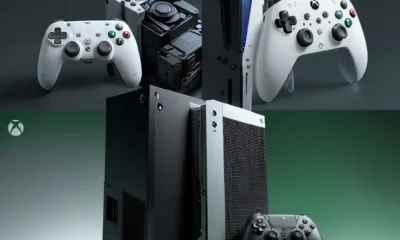
 Features1 week ago
Features1 week agoBest Cross-Platform Games for PC, PS5, Xbox, and Switch
-

 Game Reviews3 weeks ago
Game Reviews3 weeks agoHow Overcooked! 2 Made Ruining Friendships Fun
-

 Features2 weeks ago
Features2 weeks ago8 Video Games That Gradually Get Harder
-

 Game Reviews3 weeks ago
Game Reviews3 weeks agoHow Persona 5 Royal Critiques the Cult of Success
-
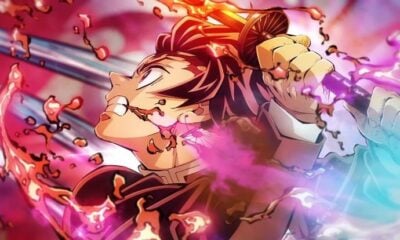
 Features1 week ago
Features1 week agoThe End Is Near! Demon Slayer’s Final Arc Trailer Hints at a Battle of Legends
-
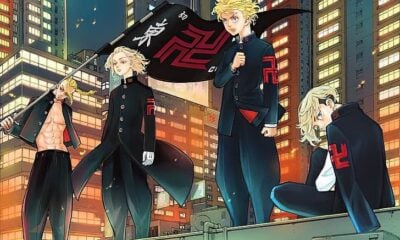
 Features2 weeks ago
Features2 weeks agoDon’t Miss This: Tokyo Revengers’ ‘Three Titans’ Arc Is What Fans Have Waited For!
-
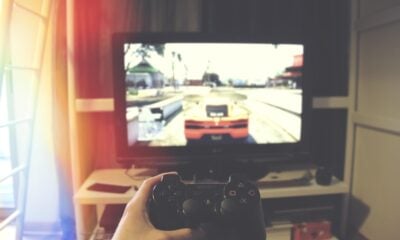
 Guides2 weeks ago
Guides2 weeks agoHow to buy games on Steam without a credit card
-
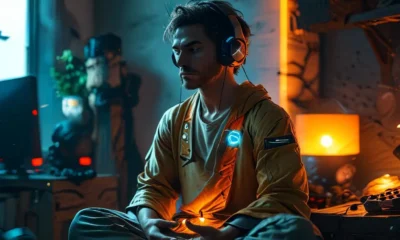
 Uncategorized2 weeks ago
Uncategorized2 weeks agoSleep Meditation Music: The Key to Unwinding
-
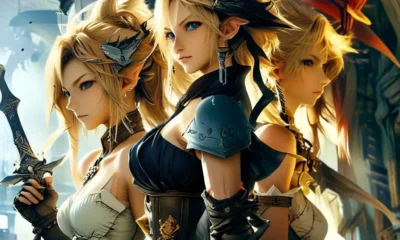
 Game Reviews1 week ago
Game Reviews1 week agoFinal Fantasy VII Rebirth Review: A Worthy Successor?






















